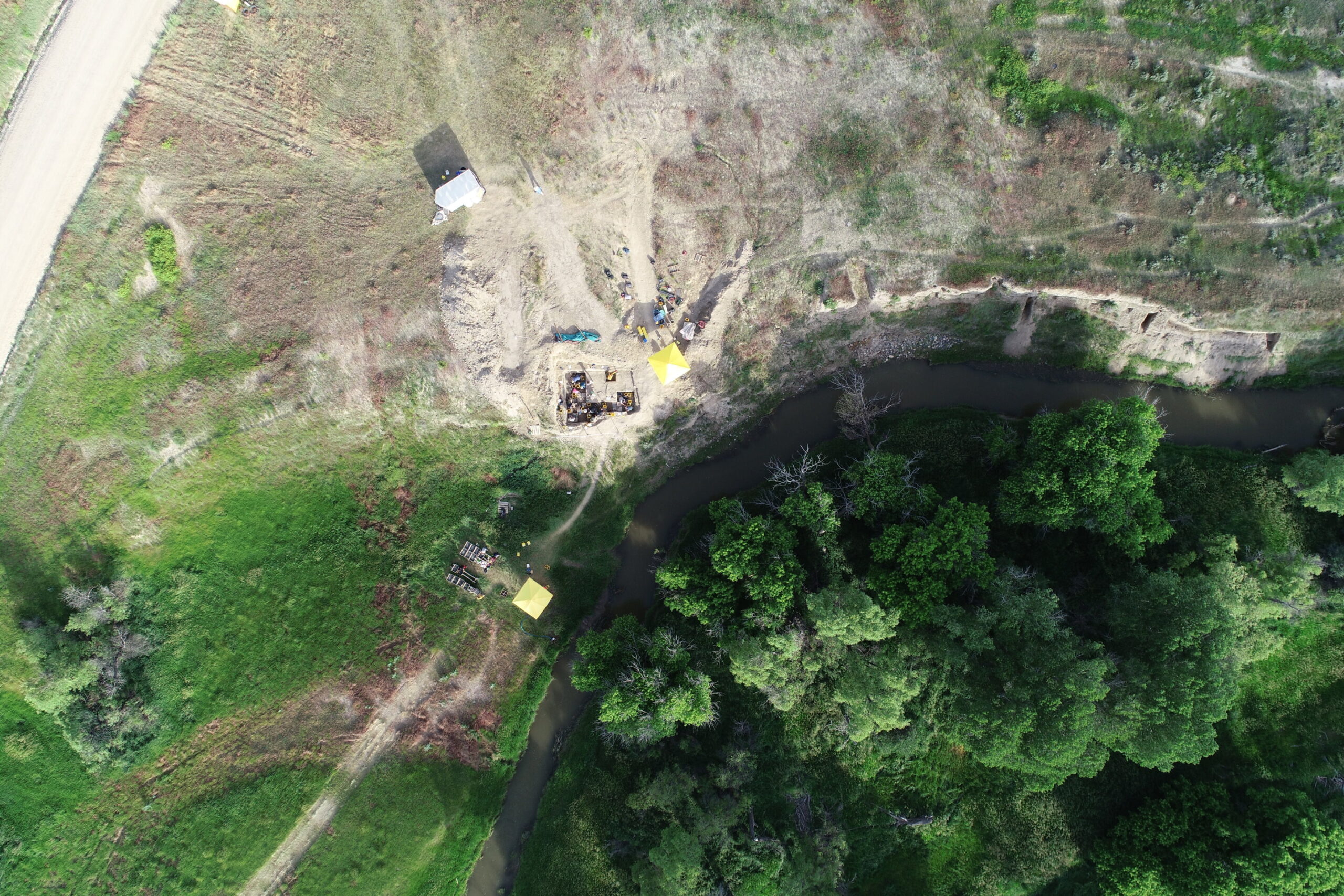A groundbreaking discovery at a Wyoming archaeological site is offering new insights into the lives of early inhabitants of North America. Nearly 13,000 years ago, people at the LaPrele site in Converse County hunted or scavenged a Columbian mammoth. Now, researchers, led by Wyoming State Archaeologist Spencer Pelton and a team from the University of Wyoming and other institutions, have uncovered evidence that these Paleoindians were also skilled in crafting tools and garments from animal bones.
The team found that these early humans made bone needles from the bones of fur-bearing animals, including foxes, hares or rabbits, and big cats like bobcats, mountain lions, lynx, and possibly even the now-extinct American cheetah. These needles were likely used to stitch together garments made from the animals’ pelts, helping the foragers stay warm in the cool climate of the time.
The study, published in PLOS ONE, highlights the sophistication of Paleoindian technology and clothing, marking the first identification of species and materials used to create eyed bone needles. The researchers argue that the ability to produce tailored garments was a crucial innovation that helped early humans survive in northern latitudes, eventually supporting the expansion of human populations into regions previously inhospitable due to cold temperatures.
The LaPrele site not only preserves the remains of a mammoth, which was butchered almost 13,000 years ago, but also contains other important artifacts. Among these is a bead made from a hare bone, which is now recognized as the oldest known bead in the Americas. The identification of the materials used to create the bone needles and bead was made possible by advanced techniques like zooarchaeology by mass spectrometry (ZooMS) and Micro-CT scanning. These methods allowed researchers to extract collagen from the bones and analyze their chemical composition to determine the origins of the materials.
The team studied 32 bone needle fragments found at the site and compared them with the bones of animals known to exist during the Early Paleoindian period, which lasted from about 13,500 to 12,000 years ago. Their analysis revealed that bones from red foxes, bobcats, mountain lions, lynx, and hares were used to craft these needles. This study is the first to ever identify the animal species involved in the production of bone needles, providing a much deeper understanding of Paleoindian culture and innovation.
While previous research suggested that humans adapted to cold environments by creating closely stitched garments, there was little direct evidence of such clothing. Now, the discovery of bone needles and the bones of fur-bearing animals whose pelts were likely used in these garments provides the first solid evidence of this cultural development.
The researchers suggest that the fur-bearing animals were probably obtained through trapping rather than hunting for food, further demonstrating the versatility of early humans in using animal products for a wide range of purposes beyond just subsistence. The presence of these animals’ bones in the archaeological record suggests that early foragers had access to fur-bearing predators, likely through trapping, and that they were using these animals for their pelts to create clothing.
These findings offer a detailed look at the early human use of tools and the adaptation to colder climates, providing important evidence for how Paleoindians were able to expand their range and settle in new environments. This discovery adds to the growing body of knowledge about the resourcefulness and ingenuity of the earliest inhabitants of North America, marking a key moment in the prehistoric history of the continent.
